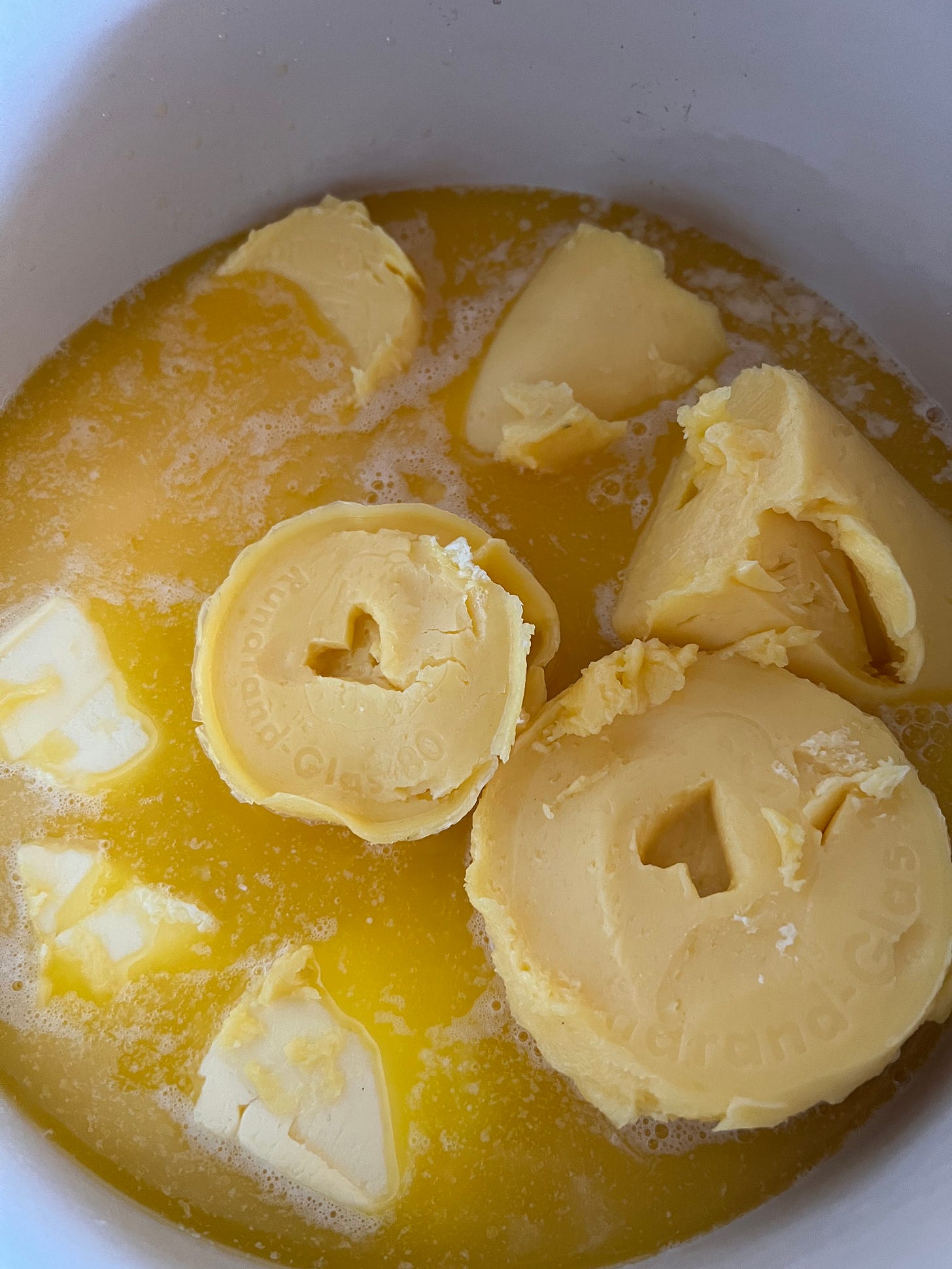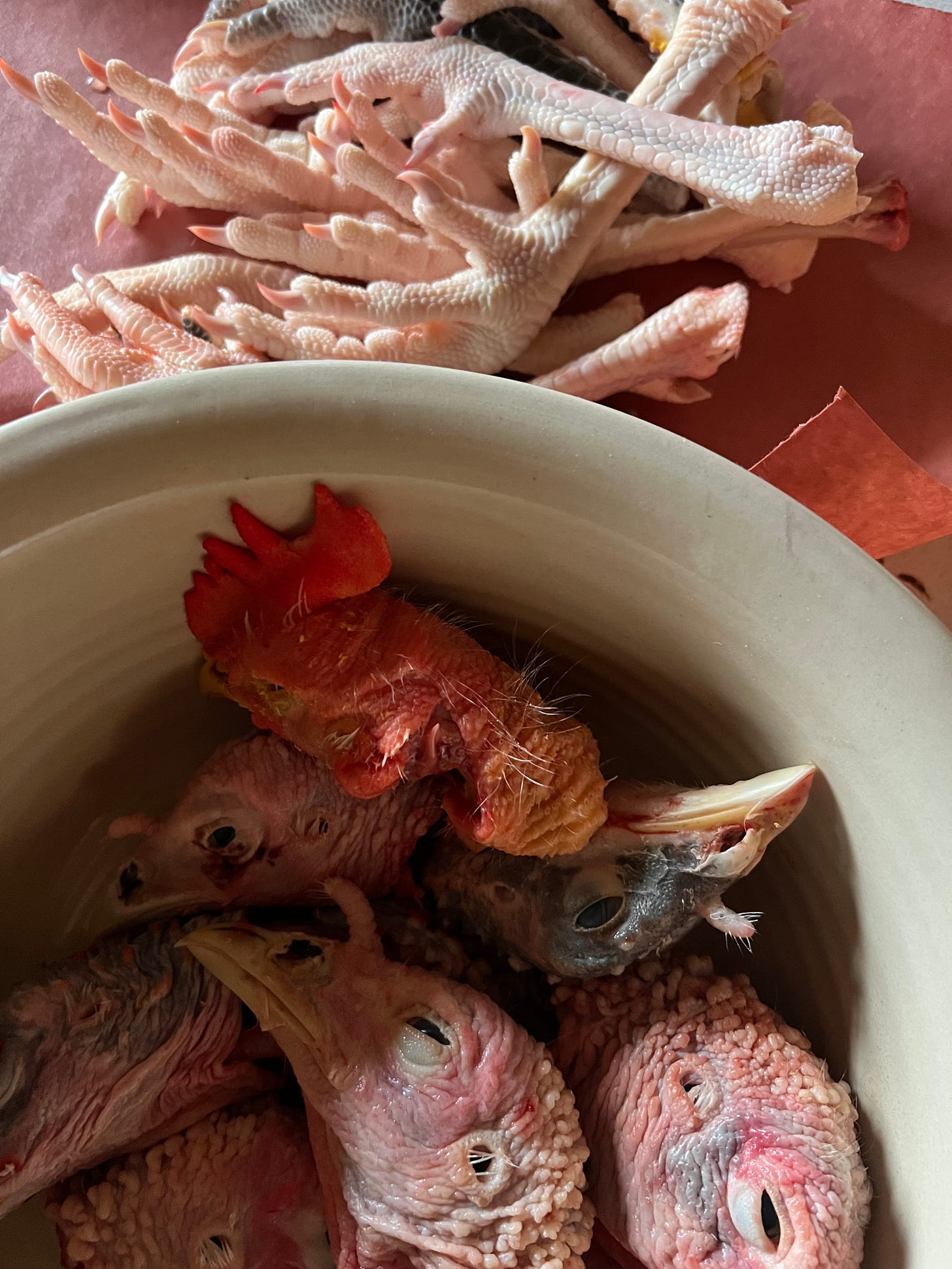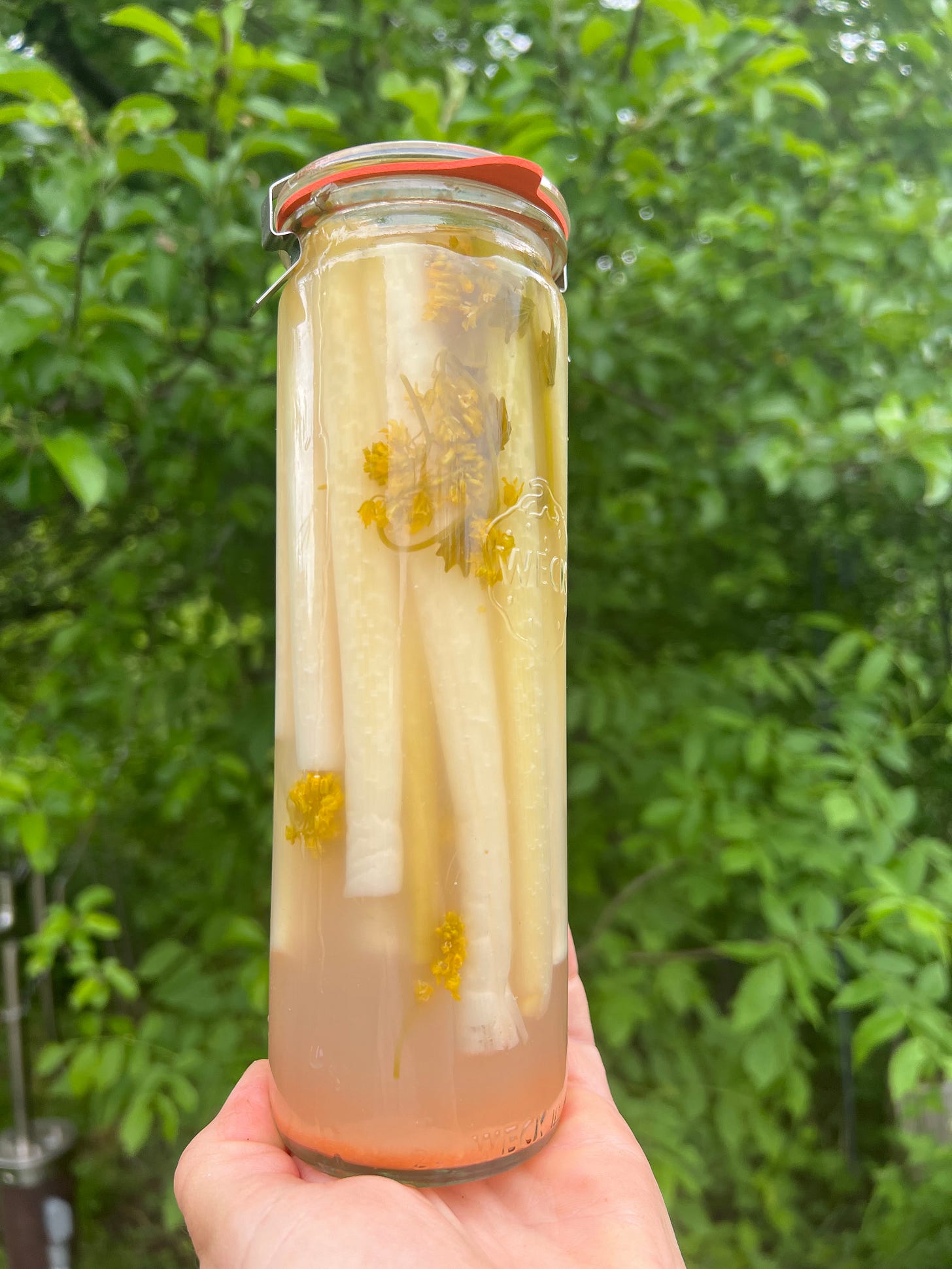in the time of harvest
Note: Subscribers can access the audio version of this essay here.
There’s a common enough exchange I have around the topic of food and autumn harvest that I’ve come to almost expect it in some conversations. It goes like this:
Fine Fella’ (FF): Why do you have to do all of your animal harvest in the autumn?
Me: Because that’s when the animal, after having spent all spring, summer, and fall on pastures, is at its prime. They’re at their healthiest, fattest, most vibrant of health from moving and exercising their muscles.
FF: Why not just do it year round?
Me: Because in the North we have times of growth and times of rest. In the winter, our animals are using their reserves to remain in good health. It’s cold, their feed is now the dried grasses/pastures of summer. There’s a loss of nutrition inherent in drying. The animals need their reserves to keep them warm in our frigid winters. There are demands on their bodies, a pull on their reserves. I want the animal at the height of its health. That’s what delivers the rich, nutrient dense food we’re after.

It’s a little puzzling for people to wrap their minds around the idea of not only eating seasonally, but in planning our harvesting and collection of food on a yearly cycle. We tend to get the idea that with plants, there is growth in the warmer months, followed by a time of harvest. We may guiltily purchase some bananas in December in Canada, knowing, if we give it a dribble of thought, there’s something not quite coherent there, but we don’t seem to get how that applies to the other foods we eat as well.
We used to get it. We used to know that the butter of summer was rich and golden, the taste sweet and silky. It was different than the greasy textured butter of winter that lost the colour clues of the nutrients within as the cow relied more and more on grain and hay. We understood that the fattened pig needed to be salted in autumn, stored in crocks to carry us into winter with the nutrients saturated in that lovely fat. We knew that to eat a vegetable in winter meant that we harvested and dried or canned or fermented them in the summer. We stored roots and tubers. We dried and buried. There was no grocery store offering anything our hearts desired.

I don’t quite understand how we’ve been so easily convinced that fresh broccoli or a salad is necessary to keep us alive in February when I can step outside and see that the world is encased in ice. Boy, that Big Guy upstairs must have really flubbed that design! Thank goodness for the grocery stores!
It’s a disconnect from nature that has allowed all manner of health advice to proliferate. All manner of purchases to proliferate! We want the foods we want when we want them. We don’t want scarcity or cycles or the work of harvest. Who wants to load their larders, take on the immensity of figuring out what it takes to feed their entire family for a year and then honestly accepting the consequences when they don’t get it quite right? Not many people, but I’m looking around and thinking, that choice may be dwindling. It may just become a necessity in the very near future.
I’ve written before of how we have been successfully eating off our farm for years now. We estimate we’re somewhere around 85-90% fulfilled by the good, nutritious, simple food of what we grow and raise. We still buy extras as “treats” like organic lemons, some organic cocoa powder (I do make a mean hot chocolate), organic vanilla bean, and then of course the extras when I run out of things in the year like some ground beef from a farmer friend or some raw goat milk from another. Oftentimes we will barter for these items, sometimes cash is king. In all cases, none of it is necessary for our survival, it’s just a want. This year, the wants are gone. This year, after we finish our harvest, our food will come 100% from our farm. It’s “Our Year’s Worth”. A fun little experiment we’re pretty excited about.
As I laid out (in the link to the essay above), there are caveats, including salt, a couple supplements, and bartering that will come into the year with us. Other than that, if we run out of beef, we run out. Guess we’re eating more rabbit. If we run out of milk, well, we’re done. I can’t wait. I want to strip my extravagances away and get to the core of what this land offers us. I’m glad to know that if I want the medicinal and culinary mushrooms I’ve come to rely on in winter, I need to forage them in the warmer months. If I want a fermented carrot in February, I better have done the work in the heat of the summer. When we sit down to feast on fatty, juicy oxtail beside a roaring fire, I know that golden fat in little puddles along the surface brings me the sunshine and sweet grasses, converted into life giving vibrancy by an animal I cared for. All of everything harvested at the peak of its nutrition.

We’re all in different places along the continuum of disconnecting to the illusion of any food/any time. Some of us are living in an apartment in the city, maybe part of a buying club that shares in the purchase of monthly meat/egg/milk deliveries from local farmers. Others of us may just be coming to whole foods, learning to start cooking, basic nourishing foods for the first time. Some are growing and raising all sorts of foods, but aren’t familiar with the abundance of wild foods around them. And of course, there are many forager geniuses and hunters traipsing through the woods for bounties of medicines and food. Mostly, we’re all a little of everything. None of us in anyone category. We can be learning to ferment and connect with local farmers while we’re still in college. We can be learning more about place, the place that holds and nourishes us, just by having the desire to connect more deeply.
And that connection is one not just to the food and the seasons of a place, it’s ultimately one to ourselves. When I tell people we raise and grow our own food, their bewilderment makes me a little sad. I get it. I understand the puzzled comments, but mostly, I think the reason they’re confused is because of what they’re eating. How does one grow the foods of today? It’s a sorcerer’s magic trick, not a recognizable food.

Part of the ease in which we go into this next year, solely eating from our farm, comes from our knowing of ourselves. It comes from having, over decades, built a connection to our bodies and our food. I don’t eat grains. We don’t eat grains. We haven’t in twenty years or so. Why would I grow grains and rely on them as a food source? No need. I don’t eat seed oils, no loss there. I don’t eat sugars, not going to have to work that one out. We have no reliance on orange juice every morning or papayas to keep us ticking. I don’t need anyone to tell me how my body feels, she’s pretty great at letting me know that all on her own. I trust myself. I trust this land. I trust our hard work. I trust our Creator who designed this all for us.
And that’s a place everyone of us can start with - how we feed ourselves now, today, our very next meal. What are we eating? Where are we taking shortcuts that don’t serve our longterm vision? What we can do now to build the lives we want to live in the future? Whether that’s being a grandma with a rock solid back so you can hike your grandkids up mountains or a young, busy mom that needs her emotions and patience to be level and steady. Maybe it’s so when we retire, we have the vitality to take on the next chapter in our lives. Whatever our reason, our health is the foundation of any future dreams. There would have been no eating solely off our farm for a year if, decades ago, we hadn’t decided to make what we were eating that day, how we were moving and living, a priority in our lives. We would have never arrived here. We just wouldn’t have the strength and fortitude to make such an undertaking possible.
These are the things that allow us to go into this next year with joy and excitement. My guess is this is just the next step for us to move into another evolution in our lives. I’m pretty sure that after a year of learning to work around any scarcity or unfulfilled foodie desires, we’re going to be just using this time to better go into our following years with even less desire to bring in “extras” from off farm, instead using our experience and knowledge to deepen our connection to what’s here, letting go of what’s not.
I will miss my vanilla bean, I suppose. Can I do without it forever? Well, we do have beavers…

p.s. It’s been absolutely wonderful to read the introductions in the subscriber chat. I’ve loved getting to see so many of your faces and hear bits of your stories. So many people feeling buoyed by others with similar interests. So many beautiful humans. A friendly little corner of the internet where I’m posting daily peeks and tips from around these parts.







Hahaha! Beaver butt goo!
I so admire what you are doing and have accomplished. I woke up to the importance of food in my mid 20s only. Before this, I grew up on toasters streudels, lipton packaged noodles, the most disgusting minute steak, and second hand smoke. My parents claim I was a picky eater. I wonder why.
I now live cozily with my husband and 2 littles. We hunt big game, have a small garden, order from local farmers as much as possible (THANKYOU clickfork.ca), and also go to a grocery store.
What you write here Tara lights my fire. All I care about is food and family. I might not be 100% self sufficient, not even close, and I may never get there, but my focus right now is cooking and making nutrient dense meals.
Excellent read, thank you! I thrilled to follow along on your years worth.
The disconnect from our food runs deep. In 2019 I did a year long apprenticeship learning the wild foods and medicine of my region. One day I shared with an acquaintance about my experience and she was utterly dumbfounded that I would eat things I found growing wild. She felt it was dirty and had no conscious awareness that conventional grocery store produce also grows in (far less nutritious) dirt. Wild.